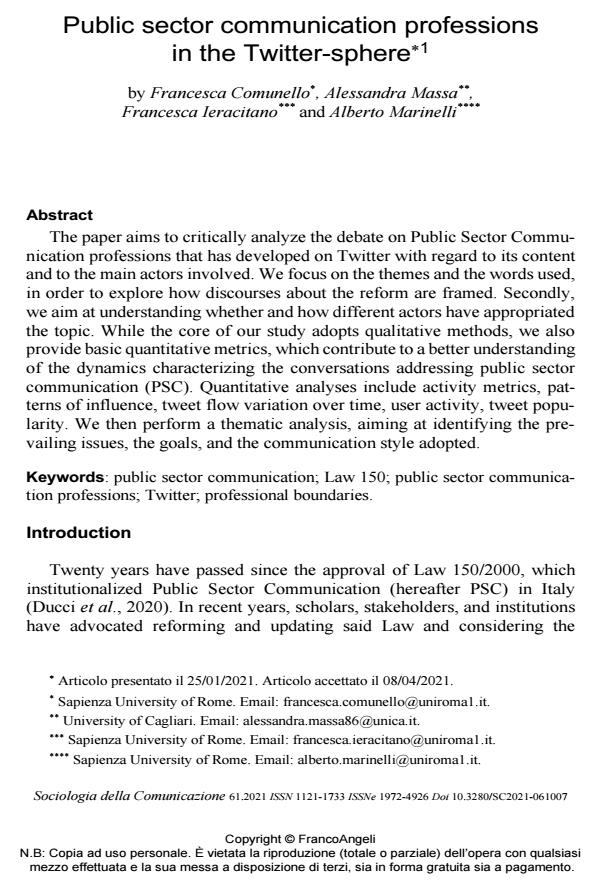Public sector communication professions in the Twitter-sphere
Journal title SOCIOLOGIA DELLA COMUNICAZIONE
Author/s Francesca Comunello, Alessandra Massa, Francesca Ieracitano, Alberto Marinelli
Publishing Year 2021 Issue 2021/61
Language English Pages 19 P. 90-108 File size 395 KB
DOI 10.3280/SC2021-061007
DOI is like a bar code for intellectual property: to have more infomation
click here
Below, you can see the article first page
If you want to buy this article in PDF format, you can do it, following the instructions to buy download credits

FrancoAngeli is member of Publishers International Linking Association, Inc (PILA), a not-for-profit association which run the CrossRef service enabling links to and from online scholarly content.
The paper aims to critically analyze the debate on Public Sector Communication professions that has developed on Twitter with regard to its content and to the main actors involved. We focus on the themes and the words used, in order to explore how discourses about the reform are framed. Secondly, we aim at understanding whether and how different actors have appropriated the topic. While the core of our study adopts qualitative methods, we also provide basic quantitative metrics, which contribute to a better understanding of the dynamics characterizing the conversations addressing public sector communication (PSC). Quantitative analyses include activity metrics, patterns of influence, tweet flow variation over time, user activity, tweet popularity. We then perform a thematic analysis, aiming at identifying the pre-vailing issues, the goals, and the communication style adopted.
Keywords: Public sector communication; Law 150; public sector communica-tion professions; Twitter; professional boundaries.
- Towards a conversational public administration? Giulia Banfi, Marco Luca Pedroni, in RDBCI: Revista Digital de Biblioteconomia e Ciência da Informação /2025 pp.e026005
DOI: 10.20396/rdbci.v24i00.8680284
Francesca Comunello, Alessandra Massa, Francesca Ieracitano, Alberto Marinelli, Public sector communication professions in the Twitter-sphere in "SOCIOLOGIA DELLA COMUNICAZIONE " 61/2021, pp 90-108, DOI: 10.3280/SC2021-061007